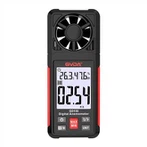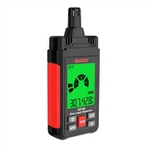What are the gases that the gas detector can routinely detect?
Common combustible gases that can be detected by gas detectors (widely known as gas alarms) are divided into:
Natural gas (methane CH4), liquefied petroleum gas (propane C3H8), hydrogen (H2), alcohol {methanol (CH3OH), ethanol (CH3CH2OH), alcohol}, toluene, xylene, benzene (C6H6), paint (benzene), methane , propane, biogas, gas, gasoline, diesel, solvent oil, ammonia, acetylene, methyl chloride, ethylene, styrene, acetone, ethylene oxide, methyl acetate, acetic acid, etc.
1. Liquefied gas
Liquefied petroleum gas is also called liquefied petroleum gas, petroleum liquefied petroleum gas, etc.; the density of the main component propane (C3H8) is higher than that of air (air is 29 on average);
2. Natural gas
The main component is methane (CH4), which is less dense than air, and the probe should be installed above the gas leak; it is divided into household and industrial use; it is mainly used in kitchens, hotels, gas stations, heating, gas burning, etc.
3. Hydrogen
Colorless and odorless; lighter than air; mainly used in power plants and generator sets for refrigeration and aluminum production
4. Methanol, ethanol, alcohol
Alcohol (C2H6O): Ethanol Industrial alcohol: Methanol
Methanol (CH3OH): chemical raw material used in chemical plants and pesticide production
Ethanol: used in wineries, cosmetics, biopharmaceutical companies
5. Toluene, xylene, benzene, paint
Benzene (C6H6) exists in a liquid state at normal temperature and pressure. volatile. Mainly used in chemical plants. Special attention: spray booth (normal temperature, high temperature resistance)
6. Gasoline, diesel, solvent oil, oil and gas
Solvent oil: n-hexane (flammable, explosive, poisonous) Solvent oil and blended oil are better sold in August and September.
Diesel: diesel generator plant
7. Ammonia
Ammonia (NH3) liquid ammonia is mainly used for refrigeration, chemical fertilizers, warehousing and logistics, and cold storage. Now is the peak season for sales! Fruits are refrigerated at constant temperature; seafood is frozen.
Two domestic tightening agents: Da Leng and Smoke Leng
Ammonia is easily soluble in water 1:500
skin infiltration poisoning
3 hydrogen sulfide (H2S), chlorine dioxide (SO2) chemical plants, pesticides
8. Acetylene, methyl chloride, ethylene, styrene, acetone. Ethylene oxide, ethyl acetate, acetic acid
Acetylene explosion-proof grade CT6
Classification of common toxic gases:
Ammonia, carbon monoxide, chlorine, hydrogen sulfide, sulfur dioxide
8-1. Carbon monoxide (CO) is widely used in underground garages, steel factories, and insufficient incineration. Gas furnace, smoking
8-2, Chlorine (CL2) breathing and soaking
8-3, tap water, pesticides, disinfection, salt (sodium chloride)
What are the gas names used in gas places?
Coke oven gas (H2) power plant
Blast furnace gas (CO) steel plant
Water gas (CO)
Some domestic liquefied petroleum gas and natural gas will also become coal gas!
Coal gas (H2)
Converter gas (CO)
Flammable and toxic gases: ammonia, toluene, xylene, methyl chloride, coal gas, ethylene oxide, propylene oxide, hydrogen, methanol, and ethanol when the accuracy is required to detect PPM!
carbon dioxide:
Carbon dioxide (CO2) is primary: detection of concentration in farms, vegetable greenhouses and other places.
Sulfur hexafluoride:
Sulfur hexafluoride (SF6) maintenance switch, power plant






